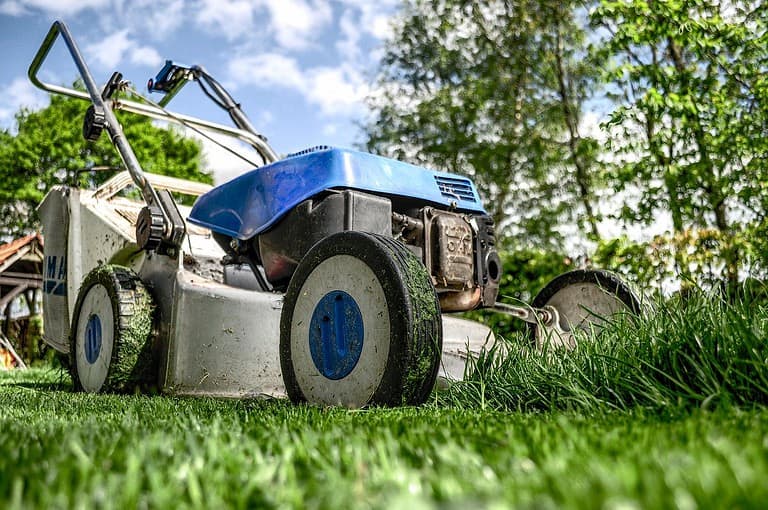Maintaining a lush, green lawn requires a combination of regular watering, fertilizing, and mowing. But when it comes to fertilizing, many homeowners wonder whether they should cut their grass before applying the fertilizer. In this article, we’ll take a closer look at the matter of cutting grass before fertilizing, and help you determine the best practices for keeping your lawn healthy and vibrant.
Should I Cut Grass Before Fertilizing?
Cutting Grass Before Fertilizing: The Pros and Cons
One of the most common questions homeowners ask is whether they should cut their grass before or after fertilizing. The answer is not a straightforward one, as it depends on a few different factors.
Pros of Cutting Grass Before Fertilizing:
- Allows for Better Nutrient Absorption: Cutting the grass before fertilizing can help the nutrients from the fertilizer to reach the soil and be absorbed by the roots more effectively. This is because shorter grass allows the fertilizer to make direct contact with the soil.
- Reduces Clumping: Cutting the grass before fertilizing can also help prevent clumping, which occurs when large amounts of grass clippings accumulate on top of the soil. Clumping can block the flow of air, water, and nutrients to the grass roots, which can lead to yellowing, thinning, and other issues.
Cons of Cutting Grass Before Fertilizing:
- Increases Stress on Grass: Cutting the grass too short can increase stress on the grass, which can make it more susceptible to disease, insect damage, and other issues.
- Can Cause Scalping: Cutting the grass too short can also cause scalping, which occurs when the mower blade cuts too close to the ground and removes too much of the grass blade. This can damage the grass and make it more vulnerable to drought, heat stress, and other environmental factors.
Ultimately, the decision of whether to cut your grass before fertilizing depends on the overall health and condition of your lawn, as well as the type of grass you have. In general, it’s a good idea to cut your grass to a moderate length (around 2-3 inches) before fertilizing, to strike a balance between nutrient absorption and grass health.
Tips for Cutting Grass Before Fertilizing
Cutting grass before fertilizing also provides a clean slate for the fertilizer to work its magic. By removing any excessive growth or dead grass, the fertilizer can better penetrate the soil and deliver the necessary nutrients to the roots. A shorter grass length also makes it easier to apply the fertilizer evenly and accurately.
- Use a sharp mower blade: A dull mower blade can cause damage to the grass blades, leaving them susceptible to disease and insect damage. A sharp blade, on the other hand, creates a clean cut, promoting healthy growth and a more attractive appearance. It’s recommended to sharpen your mower blade at least once a year, or more often if you have a large lawn.
- Mow at the right height: The ideal grass height for mowing depends on the grass species, but as a general rule of thumb, you should never remove more than one-third of the grass height at a time. Mowing too short can damage the grass roots and lead to brown patches, while mowing too high can prevent the fertilizer from reaching the soil. It’s best to keep your grass at a height of 2.5 to 3 inches, depending on the species.
- Remove any debris: Before mowing, take the time to remove any debris such as sticks, stones, or toys that could damage your mower or create a safety hazard. This will also prevent debris from getting trapped in the mower blades and spreading across the lawn, potentially damaging the grass.
- Use a bagger attachment: Using a bagger attachment on your mower can help to collect any clippings, leaves, or debris left on the lawn after mowing. This not only promotes a cleaner appearance, but it also ensures that the fertilizer is applied evenly across the lawn without any obstructions.
- Wait a few days before fertilizing: After mowing your lawn, it’s recommended to wait a few days before applying fertilizer. This allows the grass blades to recover from any damage and ensures that the fertilizer reaches the soil and roots effectively.
Conclusion:
In conclusion, there is no definitive answer to whether you should cut your grass before fertilizing, as it depends on a variety of factors. However, in general, cutting the grass to a moderate length (around 2-3 inches) before fertilizing can help promote better nutrient absorption and prevent clumping, while avoiding damage to the grass.
If you’re unsure about the best practices for fertilizing and maintaining your lawn, it’s always a good idea to consult with a lawn care professional or your local cooperative extension service.
Originally posted 2023-03-07 09:18:24.

